#geolocation apis
Explore tagged Tumblr posts
Text
How a Geolocation API Can Enhance Your Business’s Location-Based Services
In today’s fast-paced digital world, location-based services are more important than ever. Whether it’s delivering customized experiences for users or tracking assets in real-time, the ability to accurately determine a user's or device's geographical position can dramatically enhance the functionality of any application. That’s where a Geolocation API comes into play. At API Market, we offer a platform where developers and businesses can easily access APIs that bring diverse functionalities to life. The Geolocation API is one of those essential tools that can provide invaluable insights into the whereabouts of users, devices, and other objects.
Why You Need a Geolocation API in Your Application
A Geolocation API is designed to help applications determine the geographical location of a user, device, or object using GPS, IP address, or other location-determining technologies. Integrating this API into your system can open up a world of possibilities, enhancing user experience and optimizing functionality. For example, if you're running an e-commerce platform, you can offer location-based product recommendations, deliver services with pinpoint accuracy, or even track shipments in real-time. Similarly, for businesses in the hospitality or tourism sector, offering location-aware services through a Geolocation API allows customers to find nearby attractions, services, or even promotions based on their real-time location.
Key Benefits of a Geolocation API
Enhanced User Experience: Location-based services provide users with personalized experiences, whether it's showing the nearest store, suggesting nearby restaurants, or offering deals based on where they are.
Real-Time Tracking: A Geolocation API allows businesses to track assets, deliveries, or even employees in real-time, increasing operational efficiency and offering better customer service.
Targeted Marketing: By integrating a Geolocation API, businesses can deliver targeted ads, offers, and promotions to users based on their specific location, improving conversion rates and customer engagement.
Improved Customer Support: With accurate location data, businesses can offer timely support by sending help to customers in need of immediate assistance.
How API Market Facilitates Easy Access to Geolocation APIs
At API Market, we simplify the process of integrating Geolocation APIs into your applications. Our platform supports a broad range of APIs, making it easier for you to find one that perfectly fits your project requirements. Whether you're a startup or an enterprise, our user-friendly interface and robust search capabilities ensure that you can quickly discover and implement the Geolocation API that suits your business goals. The platform also allows businesses to monetize their own APIs, contributing to a growing ecosystem of creators and consumers. This dynamic marketplace is designed to foster innovation, enabling developers to scale their solutions and offer better, location-aware services.
Unleash the Potential of Geolocation APIs
A Geolocation API is more than just a tool for finding locations - it’s a powerful resource that can transform the way your business interacts with its customers and clients. By leveraging the vast opportunities offered by API Market, you can easily incorporate location-based services into your applications, making them smarter, more engaging, and more efficient. With the right Geolocation API, your business will be equipped to deliver exceptional user experiences, streamline operations, and drive growth. Explore the wide range of APIs available on API Market and start integrating innovative solutions into your applications today!
0 notes
Text
Ip Address Geolocation | Country Ip Ranges Database | DB-IP

DB-IP provides accurate IP address geolocation services, allowing businesses to identify users' geographic locations in real-time. This data helps enhance user experiences, improve security, and support targeted marketing strategies. Our country IP ranges database offers comprehensive and regularly updated IP range information, enabling precise country-level filtering and analysis. With easy API integration and scalable solutions, DB-IP is trusted by developers and enterprises worldwide for reliable geolocation and IP intelligence services across various applications.
0 notes
Text
PHP IP Geolocation Api ile Detaylı Konum Bilgisi
Merhaba! Bu proje, IP Geolocation API'yi kullanarak IP adresine dayalı konum bilgilerini öğrenmenizi sağlar. Kullanıcıların IP adreslerinden, ülkelerine, şehirlerine, enlem ve boylam bilgilerine, ISP'lerine ve zaman dilimlerine kadar çeşitli verileri görüntülemenize olanak tanır.
Proje, sadece 2 dosya ile çalışacak şekilde basit ve hızlı bir çözüm sunuyor. index.php ve api.php dosyaları ile bu veriyi çekmek ve görselleştirmek çok kolay!
Özellikler:
Kullanıcıların IP adresine göre konum bilgisi alabilirsiniz.
Ülke, şehir, IP adresi, enlem, boylam gibi bilgileri kolayca görüntüleyebilirsiniz.
Zaman dilimi, ISP ve daha fazlası hakkında bilgi edinin.
Çok basit yapısı sayesinde hızlıca kurulabilir ve kullanılabilir.
Nasıl Kullanılır?
API Anahtarınızı Alın:
IP Geolocation API adresine kaydolun ve API anahtarınızı alın.
API Anahtarını Yapılandırın:
Proje dosyasındaki api.php dosyasına gidin ve aşağıdaki satırda bulunan API_ANAHTARINIZI_BURAYA_KOPYALAYIN kısmını aldığınız API anahtarı ile değiştirin.$apiKey = 'API_ANAHTARINIZI_BURAYA_KOPYALAYIN';
Projeyi Çalıştırın:
Dosyaları sunucunuza veya lokal makinanıza yükleyin.
Tarayıcınızda index.php dosyasını açarak IP adresi ve konum bilgilerini görüntüleyin.
Kullanılabilecek Teknolojiler:
PHP
cURL
JSON
Katkı Sağlama
Bu projeye katkıda bulunmak isterseniz, pull request gönderebilir veya issues bölümünden geribildirim bırakabilirsiniz.
License
Bu proje MIT License ile lisanslanmıştır.
Bu projeyi mscacan tarafından geliştirilmiştir. Eğer sorularınız veya önerileriniz varsa, lütfen bana GitHub üzerinden ulaşın.
0 notes
Text
Understanding IP Address Whitelisting and Its Role in Geo Location IP REST APIs
Introduction:
In the realm of modern digital security, IP address whitelisting stands as a robust and indispensable safeguard. It is a potent defense mechanism used to control access to networks and resources, ensuring that only trusted entities are permitted while unauthorized access is effectively blocked. In this article, we will delve into the concept of IP address whitelisting and explore its significance, particularly in the context of Geo Location IP REST APIs.
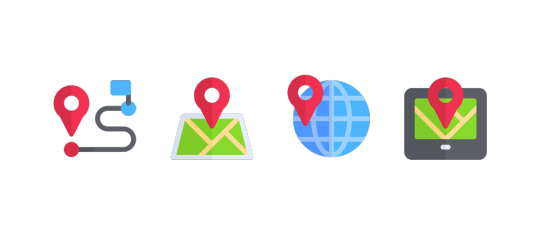
1. IP Address Whitelisting Demystified:
IP address whitelisting is a security practice that enables organizations to specify a list of trusted IP addresses or ranges of addresses that are allowed to access their resources or services. Essentially, it creates a virtual "whitelist" of permitted entities, granting them access while denying entry to all others.
2. The Role of IP Address Whitelisting in Geo Location IP REST APIs:
Geo Location IP REST APIs rely on the principle of IP address whitelisting to enhance security and accuracy. Here's how it comes into play:
a. Enhanced Security: By whitelisting IP addresses, Geo Location IP REST APIs ensure that only authorized and reputable sources can access sensitive geographical data. This adds an extra layer of protection against potential threats.
b. Controlled Access: Geo Location APIs often provide valuable location-based information. IP address whitelisting enables organizations to tightly control who can access and utilize this data, safeguarding its integrity.
3. How Does an IP Address REST API Get an IP Address?
Geo Location IP address REST APIs retrieve a user's IP address when a request is made to the API endpoint. The API extracts the user's IP address from the request headers, allowing it to identify the user's approximate location based on this information.
4. Implementing IP Address Whitelisting for Geo Location IP REST APIs:
a. Determine Trusted Sources: Identify the IP addresses or ranges that should be whitelisted, such as known partners, trusted users, or specific devices.
b. Configure Whitelist Rules: Implement rules in your Geo Location IP REST API that restrict access to only the whitelisted IP addresses. Any request originating from a non-whitelisted IP address is automatically denied.
c. Regularly Update and Monitor: It's crucial to keep the whitelist updated as IP addresses may change. Regularly monitor access logs and review the effectiveness of your whitelisting strategy.
Conclusion:
IP address whitelisting plays a pivotal role in securing Geo Location IP REST APIs, ensuring that only trusted sources can access and utilize valuable location-based data. By implementing this robust security measure, organizations can protect their resources, maintain data integrity, and enhance the overall security of their applications and services. As the digital landscape continues to evolve, IP address whitelisting remains a vital component of a comprehensive security strategy, especially for Geo Location IP REST APIs where data accuracy and privacy are paramount.
0 notes
Text
Empowering Apps with IPstack Location Services API for Accurate Geolocation Data
In today's digital landscape, location-based services are at the forefront of enhancing user experiences and delivering valuable information. IPstack Location Services API, with its rich set of features, is a game-changer for developers seeking precise IP geolocation data and GPS coordinates. Let's dive into how this powerful tool can transform your applications.

IPstack Location Services API: This versatile API offers an easy and efficient way to obtain IP geolocation data. Whether you need GPS coordinates for tracking, location IP lookup for user personalization, or a free IP lookup API for cost-effective solutions, IPstack has you covered.
Accurate IP Geolocation Data: With IPstack, you can access highly accurate IP geolocation data. This means you can pinpoint a user's location down to the city or even the neighborhood, providing personalized content and services based on their geographical location.
Precise GPS Coordinates: For applications relying on GPS data, IPstack Location Services API delivers pinpoint-accurate GPS coordinates. Whether you're building a fitness app, a delivery tracking system, or a social networking platform, this level of accuracy is indispensable.
Location IP Lookup: Need to perform location IP lookup? IPstack's API simplifies the process. It allows you to identify the location of any IP address, making it ideal for security applications, targeted marketing, or compliance verification.
Free IP Lookup API: Budget-conscious developers will appreciate IPstack's free IP lookup API. It provides a cost-effective way to access essential IP geolocation data without compromising on accuracy. This option is perfect for startups and small businesses looking to optimize their location-based services.
API IP GeoLocation: If you're seeking a comprehensive solution for IP geolocation, IPstack is the answer. Its Location Services API offers seamless integration, enabling your application to harness the power of precise geolocation data. Whether you're building a weather app, a restaurant finder, or a travel planner, this API can take your project to the next level.
In conclusion
, IPstack Location Services API is a versatile and valuable tool for developers. It empowers applications with accurate IP geolocation data, GPS coordinates, and location IP lookup capabilities. Plus, with a free IP lookup API option, it caters to a wide range of needs and budgets. Embrace the power of geolocation and provide your users with personalized, location-based experiences by integrating IPstack into your projects. Elevate your apps today with IPstack Location Services API!
1 note
·
View note
Text
Let's understand HTML

Cover these topics to complete your HTML journey.
HTML (HyperText Markup Language) is the standard language used to create web pages. Here's a comprehensive list of key topics in HTML:
1. Basics of HTML
Introduction to HTML
HTML Document Structure
HTML Tags and Elements
HTML Attributes
HTML Comments
HTML Doctype
2. HTML Text Formatting
Headings (<h1> to <h6>)
Paragraphs (<p>)
Line Breaks (<br>)
Horizontal Lines (<hr>)
Bold Text (<b>, <strong>)
Italic Text (<i>, <em>)
Underlined Text (<u>)
Superscript (<sup>) and Subscript (<sub>)
3. HTML Links
Hyperlinks (<a>)
Target Attribute
Creating Email Links
4. HTML Lists
Ordered Lists (<ol>)
Unordered Lists (<ul>)
Description Lists (<dl>)
Nesting Lists
5. HTML Tables
Table (<table>)
Table Rows (<tr>)
Table Data (<td>)
Table Headings (<th>)
Table Caption (<caption>)
Merging Cells (rowspan, colspan)
Table Borders and Styling
6. HTML Forms
Form (<form>)
Input Types (<input>)
Text Fields (<input type="text">)
Password Fields (<input type="password">)
Radio Buttons (<input type="radio">)
Checkboxes (<input type="checkbox">)
Drop-down Lists (<select>)
Textarea (<textarea>)
Buttons (<button>, <input type="submit">)
Labels (<label>)
Form Action and Method Attributes
7. HTML Media
Images (<img>)
Image Maps
Audio (<audio>)
Video (<video>)
Embedding Media (<embed>)
Object Element (<object>)
Iframes (<iframe>)
8. HTML Semantic Elements
Header (<header>)
Footer (<footer>)
Article (<article>)
Section (<section>)
Aside (<aside>)
Nav (<nav>)
Main (<main>)
Figure (<figure>), Figcaption (<figcaption>)
9. HTML5 New Elements
Canvas (<canvas>)
SVG (<svg>)
Data Attributes
Output Element (<output>)
Progress (<progress>)
Meter (<meter>)
Details (<details>)
Summary (<summary>)
10. HTML Graphics
Scalable Vector Graphics (SVG)
Canvas
Inline SVG
Path Element
11. HTML APIs
Geolocation API
Drag and Drop API
Web Storage API (localStorage and sessionStorage)
Web Workers
History API
12. HTML Entities
Character Entities
Symbol Entities
13. HTML Meta Information
Meta Tags (<meta>)
Setting Character Set (<meta charset="UTF-8">)
Responsive Web Design Meta Tag
SEO-related Meta Tags
14. HTML Best Practices
Accessibility (ARIA roles and attributes)
Semantic HTML
SEO (Search Engine Optimization) Basics
Mobile-Friendly HTML
15. HTML Integration with CSS and JavaScript
Linking CSS (<link>, <style>)
Adding JavaScript (<script>)
Inline CSS and JavaScript
External CSS and JavaScript Files
16. Advanced HTML Concepts
HTML Templates (<template>)
Custom Data Attributes (data-*)
HTML Imports (Deprecated in favor of JavaScript modules)
Web Components
These topics cover the breadth of HTML and will give you a strong foundation for web development.
Full course link for free: https://shorturl.at/igVyr
2 notes
·
View notes
Text
ESP32-S3 moon phase clock test on 2.1" round TFT display 🌜🌚🖥️
Now that we have somewhat-kinda-sorta working support for RGB TFT displays on the ESP32-S3 - shout out to Jepler, who is doing the hard work over in this PR https://github.com/adafruit/circuitpython/pull/8351 - its time to test it with wifi too! That's right, the S3 can do wifi and these big displays at once, and CircuitPython is a beautiful framework for it since its so fast to iterate. This code snippet is based on PaintYourDragon's moon clock code here https://learn.adafruit.com/moon-phase-clock-for-adafruit-matrixportal but pared down for testing. We get the geolocation from IP, then look up the moon phase. Currently we just hardcoded it to display today's phase, but the next step is generating ~28 different phase images, and we'll display the one for the current evening as the API informs us.
#espressif#esp32#espfriends#display#adafruit#electronics#opensource#opensourcehardware#circuitpython#tftdisplay#coding#rgbdisplay#round#moonphase#test#wifi#jepler#prsupport#framework#fastiterate#geolocation#api#eveningphase
4 notes
·
View notes
Text

How To Check Your Public IP Address Location
Determining your public IP address location is a straightforward process that allows you to gain insight into the approximate geographical region from which your device is connecting to the internet.
This information can be useful for various reasons, including troubleshooting network issues, understanding your online privacy, and accessing region-specific content. This introduction will guide you through the steps to check your public IP address location, providing you with a simple method to retrieve this valuable information.
How To Find The Location Of Your Public Ip Address? To find the location of your public IP address, you can use online tools called IP geolocation services. Simply visit a reliable IP geolocation website or search "What is my IP location" in your preferred search engine.
These services will display your approximate city, region, country, and sometimes even your Internet Service Provider (ISP) details based on your IP address. While this method provides a general idea of your IP's location, keep in mind that it might not always be completely accurate due to factors like VPN usage or ISP routing.
What Tools Can I Use To Identify My Public Ip Address Location? You can use various online tools and websites to identify the location of your public IP address. Some commonly used tools include:
IP Geolocation Websites: Websites like "WhatIsMyIP.com" and "IPinfo.io" provide instant IP geolocation information, displaying details about your IP's approximate location.
IP Lookup Tools: Services like "IP Location" or "IP Tracker" allow you to enter your IP address to retrieve location-related data.
Search Engines: Simply typing "What is my IP location" in search engines like Google or Bing will display your IP's geographical information.
IP Geolocation APIs: Developers can use APIs like the IPinfo API to programmatically retrieve location data for their public IP addresses.
Network Diagnostic Tools: Built-in network diagnostic tools on some operating systems, such as the "ipconfig" command on Windows or "ifconfig" command on Linux, provide basic information about your IP.
Some browser extensions, like IP Address and Domain Information can display your IP's location directly in your browser. Remember that while these tools provide a general idea of your IP address location, factors like VPN usage or ISP routing can impact the accuracy of the information displayed.
Can I Find My Ip Address Location Using Online Services?
Yes, you can determine your IP address location using online services. By visiting websites like WhatIsMyIP.com or "IPinfo.io" and searching What is my IP location you'll receive information about your IP's approximate geographical region.
However, it's important to note that if you're using a No Lag VPN – Play Warzone, the displayed location might reflect the VPN server's location rather than your actual physical location. Always consider the possibility of VPN influence when using online services to check your IP address location.
What Should Players Consider Before Using A Vpn To Alter Their Pubg Experience? Before players decide to use a VPN to alter their PUBG experience, there are several important factors to consider:
Ping and Latency: Understand that while a VPN might provide access to different servers, it can also introduce additional ping and latency, potentially affecting gameplay.
Server Locations: Research and select a VPN server strategically to balance potential advantages with increased distance and latency.
VPN Quality: Choose a reputable VPN service that offers stable connections and minimal impact on speed.
Game Stability: Be aware that VPN usage could lead to instability, causing disconnections or disruptions during gameplay.
Fair Play: Consider the ethical aspect of using a VPN to manipulate gameplay, as it might affect the fairness and balance of matches.
VPN Compatibility: Ensure the VPN is compatible with your gaming platform and PUBG.
Trial Period: Utilise any trial periods or money-back guarantees to test the VPN's impact on your PUBG experience.
Security and Privacy: Prioritise a VPN that ensures data security and doesn't compromise personal information.
Local Regulations: Be aware of any legal restrictions on VPN usage in your region.
Feedback and Reviews: Read user experiences and reviews to gauge the effectiveness of the VPN for PUBG.
By carefully considering these factors, players can make informed decisions about using a VPN to alter their PUBG experience while minimising potential drawbacks and ensuring an enjoyable and fair gaming environment.
What apps can help you discover your public IP address location and how do they work? Yes, there are apps available that can help you discover your public IP address location. Many IP geolocation apps, such as IP Location or IP Tracker are designed to provide this information quickly and conveniently.
These apps can be found on various platforms, including smartphones and computers, allowing you to easily check your IP's approximate geographical region. However, please note that if you're using a VPN, the location displayed might reflect the VPN server's location. Also, unrelated to IP address location, if you're interested in learning about How To Get Unbanned From Yubo you would need to explore specific guidelines or resources related to that topic.
How Can I Check My Public Ip Address Location? You can easily check your public IP address location by visiting an IP geolocation website or using an IP lookup tool. These online services provide details about your IP's approximate geographic region.
Are There Mobile Apps To Help Me Determine My Public Ip Address Location? Yes, there are mobile apps available on various platforms that allow you to quickly find your public IP address location. These apps provide a user-friendly way to access this information while on the go.
CONCLUSION Checking your public IP address location is a straightforward process facilitated by numerous online tools and websites. These resources offer quick access to valuable information about your IP's approximate geographic region.
Whether through IP geolocation websites, search engines, or dedicated mobile apps, determining your public IP address location can assist in troubleshooting network issues, enhancing online privacy awareness, and accessing region-specific content. By utilizing these tools, users can easily gain insights into their digital presence and make informed decisions regarding their online activities

2 notes
·
View notes
Text
How to Scrape Popeyes Restaurant Locations USA for Smarter Delivery Route Planning in QSR Chains?

Introduction
In the fast-paced Quick Service Restaurant (QSR) industry, precision in delivery route planning isn’t a luxury—it’s a necessity. For chains like Popeyes, which saw tremendous growth in the U.S. market, optimizing delivery routes based on real-time location data can significantly improve customer satisfaction and operational efficiency. As of 2025, Popeyes operates over 3,800 locations in the U.S., a sharp rise from 3,300 in 2020, marking a consistent annual growth of ~5%. To leverage this growth, QSR chains and food delivery startups are increasingly turning to location intelligence solutions to improve logistical planning. One of the most efficient ways to do this is to Scrape Popeyes restaurant locations USA to access structured, up-to-date geographic data. In this blog, we explore how delivery teams can use this scraped data to create smarter routes, reduce fuel consumption, and increase delivery speed—all while staying ahead of the competition.
Why Restaurant Location Data Is Crucial for Delivery Route Optimization?
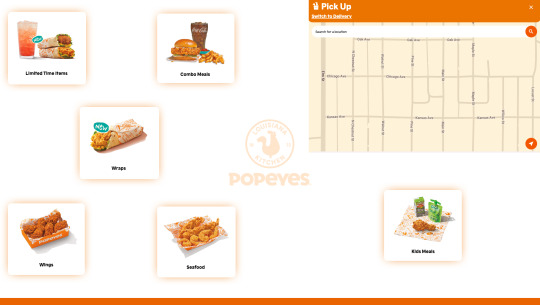
Efficient delivery depends on precise geolocation data. When a QSR chain or a third-party logistics provider wants to reduce delivery time and avoid missed or delayed orders, knowing where each Popeyes store is located becomes fundamental. By implementing Popeyes restaurant locations data scraping USA, operators can overlay real-time traffic, customer location clusters, and delivery driver availability to determine the most time-effective paths.
For example, in metro areas like Houston or Miami where Popeyes locations are dense, overlapping delivery zones can create inefficiencies. But by using tools that support Scraping Popeyes restaurant Locations Data USA, companies can map exact lat/long data, set up automated zone planning, and dynamically reroute drivers based on traffic conditions.
Store Growth Data (2020–2025)

By integrating this data through Web Scraping Popeyes store locations USA, QSR businesses can significantly reduce inefficiencies while increasing on-time delivery rates and reducing customer churn.
Boost delivery speed and efficiency—leverage accurate restaurant location data with Real Data API for smarter, data-driven route optimization across your QSR network.Get Insights Now!
How Data Scraping Powers Dynamic Delivery Zones?

A key application of scraping tools is the ability to build dynamic delivery zones that adapt to time, traffic, and customer demand. Static delivery radii often lead to inefficiencies, especially in cities where population density and store locations vary significantly. This is where tools that help Scrape Popeyes restaurant locations USA become indispensable. With the data scraped and structured, QSR businesses can break out of rigid ZIP code-based delivery maps and move toward real-time, intelligent delivery zones.
Using a Popeyes restaurant locations Extractor USA, businesses can retrieve data points like full address, zip code, store hours, and contact details. When combined with driver tracking and customer analytics, it allows for the optimization of route length, reduction in fuel usage, and even improved food quality on delivery.
Delivery Efficiency Impact (2020–2025)

With advanced Store location USA analysis, businesses saw a ~55% improvement in fuel efficiency and driver utilization over five years. Scraping Popeyes location data enables QSR companies to transition from manual planning to automated, AI-powered logistics models.
Leveraging Location Clustering for Market Insights
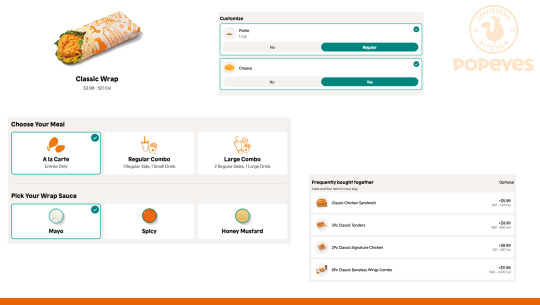
Another strategic advantage of scraping location data is gaining visibility into clustering patterns. Businesses can identify where Popeyes is over- or under-represented, which helps in identifying expansion opportunities or competitive hotspots. By using Scrape Popeyes restaurant locations USA, companies can perform market intelligence analysis to plan new franchise locations or adjust their service areas.
Clustering helps determine store cannibalization risks, optimal delivery hub placement, and urban vs. suburban service strategies. Platforms offering Popeyes restaurant locations data scraping USA provide filters to segregate by state, city, or density. For example, delivery providers might realize that certain rural zones are underserved or that a metro area has too many overlapping zones causing delays.
Location Cluster Density (Top 5 States - 2025)
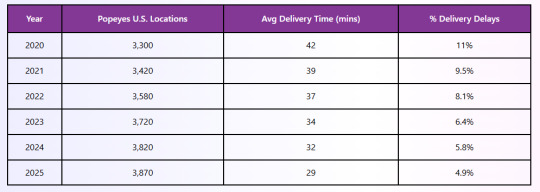
With Web Scraping Popeyes store locations USA, analysts can overlay demographic data, existing delivery zones, and sales volumes to make high-stakes logistics decisions with precision.
Unlock market insights with Real Data API—use location clustering from Popeyes store data to expand intelligently and optimize delivery performance in key regions.Get Insights Now!
Why Choose Real Data API?
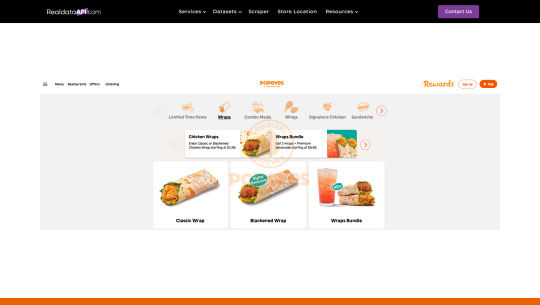
Real Data API offers a powerful, scalable, and reliable infrastructure designed specifically for location-based data extraction. Whether you need to extract structured data from mobile apps or dynamic web platforms, our system ensures you get clean, updated records. We support real-time updates, custom endpoints, and category-level filtering—essential for large QSR operations and food logistics platforms.
With capabilities like Web Scraping API Services, Mobile App Scraping Services, and specialized solutions such as Popeyes restaurant locations data scraping USA, we help our clients build accurate datasets and integrate them directly into delivery software, dashboards, or analytics platforms. Backed by 99.9% uptime, enterprise-grade support, and compliance with scraping regulations, Real Data API is your trusted partner for unlocking hyperlocal delivery insights.
Conclusion
Scraping restaurant location data is no longer a niche technical task—it’s a strategic business enabler. With the ability to Scrape Popeyes restaurant locations USA, QSR chains and delivery partners can optimize their logistics, reduce operating costs, and exceed customer expectations. Whether it’s about mapping high-density zones, reducing delivery times, or expanding into new territories, location intelligence driven by real-time data scraping provides a measurable advantage.
Ready to turn delivery logistics into a competitive edge? Start scraping smarter with Real Data API today!
Source: https://www.realdataapi.com/scrape-popeyes-restaurant-locations-usa-for-delivery-route-planning.php Originally Published By: https://www.realdataapi.com
#ScrapePopeyesLocationsUSA#PopeyesRestaurantLocationsDataScrapingUSA#ScrapingPopeyesRestaurantLocationsDataUSA#WebScrapingPopeyesStoreLocationsUSA#PopeyesRestaurantLocationsExtractorUSA
0 notes
Text
Geolocation API - Unlocking Location Intelligence for Smarter Applications
In today’s digital world, knowing where your users are can make all the difference in delivering personalized, timely, and relevant experiences. That’s where the Geolocation API comes in - a powerful tool that helps developers and businesses tap into location data easily and effectively. At API Market, we understand how critical location-based insights are, and our platform offers seamless access to reliable Geolocation API options that simplify integration and boost your app’s functionality.
What is a Geolocation API?
Simply put, a Geolocation API is a software interface that allows applications to determine the geographic location of a device or user. This can be based on IP addresses, GPS data, Wi-Fi signals, or cellular networks. By using a Geolocation API, apps can provide features like localized content, targeted advertising, delivery tracking, and enhanced security - all tailored to where your users actually are.
Why Use a Geolocation API?
Imagine you're running an e-commerce app. Knowing a user’s location helps you show products available in their region, suggest nearby stores, or estimate delivery times accurately. For social apps, location can enable friend recommendations or nearby event alerts. Even in security, location helps detect unusual logins from unexpected places. With a Geolocation API, all these possibilities open up with just a few lines of code.
How API Market Simplifies Access to Geolocation API
At API Market, we make it incredibly easy for developers and businesses to find and use the right Geolocation API. Our unified platform connects you to a curated collection of high-quality APIs that deliver accurate and fast location data.
Transparent Pricing: Ensures you know exactly what you pay for, with no hidden fees.
Reliable Documentation: Helps you integrate APIs smoothly, even if location data is new to your project.
Secure Access Controls: Protect your users’ sensitive data while ensuring compliance with privacy standards.
Performance Monitoring: Keeps your location services running optimally, giving you peace of mind.
With API Market, you can buy, test, and manage your Geolocation API subscriptions all in one place - saving time and avoiding the hassle of juggling multiple providers.
Benefits of Using Geolocation API Through API Market
Faster Product Development: By reducing time spent searching for and evaluating APIs.
Flexibility: To switch between different Geolocation API options depending on your app’s needs.
Better User Experience: By delivering precise location-based features.
Scalability: To handle growing user bases without compromising speed or accuracy.
Empower Your Apps with Geolocation API
Whether you’re building a logistics platform, social app, or any service that benefits from location intelligence, the Geolocation API is an essential building block. Through API Market, you gain direct access to the best Geolocation API providers, helping you build smarter applications faster and more efficiently. Ready to add location power to your projects? Explore our marketplace at API Market and start integrating Geolocation API today.
0 notes
Text
8 Steps to Integrate an IP Address Geolocation API into Your Website

Integrating an IP address geolocation API into your website allows you to enhance user experience, security, and analytics by identifying visitor locations in real time. In this guide, we break down the process into eight simple steps, from selecting the right API to implementing and testing it. Using a reliable location lookup API, you can customize content, detect fraud, and optimize website performance based on geographic insights. Follow our step-by-step approach to seamlessly integrate geolocation data and unlock new possibilities for your website. Whether you're a developer or a business owner, this guide will help you make the most of IP intelligence. Explore the best practices and start leveraging geolocation for a smarter, more personalized web experience with DB-IP.
See More:- https://www.ranktracker.com/blog/8-steps-to-integrate-an-ip-address-geolocation-api-into-your-website/
0 notes
Text
Android App Development Services in Bangalore – Powering Innovation with Jurysoft
In a mobile-driven economy, having a high-performing Android app isn’t just a competitive advantage—it’s the foundation of your digital growth. With billions of Android users worldwide and a growing demand for mobile-first services, businesses need more than just apps—they need smart, scalable, and secure Android solutions built by trusted experts.
Jurysoft, a premier Android app development company in Bangalore, delivers exactly that.
From startups to enterprises, we empower organizations to bring their Android app ideas to life with innovative design, cutting-edge technology, and business-centric strategies.
Why Bangalore Chooses Jurysoft for Android App Development
Bangalore is home to India’s most dynamic and tech-forward businesses. Amid this innovation-rich environment, Jurysoft has emerged as a trusted name for building future-ready Android apps that solve real-world problems and scale with business growth.
Here's why companies partner with us:
Local Expertise with Global Delivery Standards
Agile Development, Faster Time-to-Market
Customer-Centric and Result-Oriented Approach
Deep Android OS & Architecture Understanding
Focus on Performance, Security, and UX
We understand what Bangalore-based businesses need��and we deliver world-class results, every time.
Android Development That Drives Business Value
At Jurysoft, Android development isn’t just about writing code. It’s about building intelligent digital products that align with your business goals and deliver measurable outcomes.
Whether you're launching a product, optimizing operations, or entering a new market, our Android solutions are built for:
🎯 High User Engagement
⚡ Speed and Reliability
🔒 End-to-End Security
📊 Data-Driven Decisions
We help you make a bigger impact with every tap.
Our Android App Development Services
1. End-to-End Custom Android App Development
From wireframes to deployment, we offer complete Android development under one roof. No templates—only tailored solutions built from scratch to fit your unique requirements.
2. Android UI/UX Design
We craft smooth, responsive, and intuitive interfaces that keep users coming back. Our designs blend creativity with functionality.
3. Native Android Development (Java/Kotlin)
Our team builds robust, high-performance apps using modern tools and SDKs. We write clean, scalable code optimized for Android platforms.
4. Cross-Platform Development (Flutter & React Native)
Want to target both Android and iOS? We use cross-platform technologies that minimize development time and cost without compromising user experience.
5. API & Backend Integration
We build powerful backend systems and integrate APIs to enable seamless features like real-time updates, payment gateways, geolocation, and more.
6. App Testing and QA
Every app we build goes through extensive quality assurance. We simulate real-world usage to eliminate bugs before your users ever see them.
7. Play Store Launch & Optimization
From app store submission to ASO (App Store Optimization), we manage everything needed to ensure your app gets visibility and downloads.
8. Post-Launch Support
Technology evolves fast. We offer continuous maintenance, feature updates, and system optimization to keep your app ahead of the curve.
Who We Build For
Jurysoft works with forward-thinking businesses across sectors:
Startups – MVPs, lean launches, and rapid scaling
Healthcare – Patient apps, teleconsultation, wellness tracking
E-commerce & Retail – Mobile shopping, inventory systems, loyalty apps
EdTech – Learning management systems and student apps
Logistics – Real-time tracking, route optimization, driver apps
Enterprises – Workflow automation, CRM, HRMS apps
Our mission is to turn your industry-specific needs into user-loved Android applications.
Agile Process, Transparent Delivery
We follow a proven, iterative methodology to deliver results faster and with greater accuracy:
Discovery & Planning – We analyze your vision, audience, and market.
Design & Prototype – Wireframes and clickable prototypes bring your idea to life.
Development – Agile sprints ensure speed and flexibility.
Testing – Performance, compatibility, and security checks.
Launch – We publish your app and monitor the go-live process.
Support & Optimization – Continuous improvement based on real-world feedback.
Why Clients Trust Jurysoft
Every app we build reflects our commitment to quality, security, and innovation. Our clients appreciate:
Proven Results – From idea to revenue-generating app
Skilled Android Developers – Handpicked for technical and domain expertise
Direct Communication – Work with dedicated teams, not ticketing systems
Tech Stack Versatility – We use Android SDK, Jetpack, Firebase, Room, Retrofit, and more
100% In-House Bangalore Team – No outsourcing, no surprises
We're not just developers. We're growth partners.
Ready to Build a High-Impact Android App?
If you’re looking for Android app development services in Bangalore, Jurysoft is here to make it happen. Whether it's your first app or your fifth, we bring technical excellence and business insight to help you succeed.
👉 Start your journey today: Visit our Android & mobile app development page to schedule a free consultation.
Let’s build something game-changing.
🧾 FAQ – Android App Development with Jurysoft
How much does Android app development cost? Pricing varies depending on complexity, features, and timeline. We offer custom quotes after a discovery session.
Do you sign NDAs? Absolutely. Your ideas and data are protected from day one.
How long will my Android app take to build? Anywhere from 6 to 20 weeks, depending on scope and features. We provide a clear roadmap upfront.
Can you take over an existing Android project? Yes. We offer code audits, re-engineering, and feature upgrades for existing Android apps.
Final Words
The mobile app you build today can become your biggest digital asset tomorrow. Make sure you build it with the right team.
At Jurysoft, we combine Bangalore’s tech brilliance with a passion for solving real-world problems through Android development. We're here to help you dream bigger, build faster, and grow smarter.
📞 Let’s turn your Android idea into reality. 👉 Explore Android Development Services by Jurysoft
0 notes
Text
Web Development for Real Estate Portals: What Features Really Matter
In a competitive real estate market, having a high-performing website is no longer optional—it’s essential. Whether you’re an agency, a property listing platform, or an independent realtor, your website needs to do more than just display listings. It should engage users, build trust, and support smooth transactions.
That’s why a professional Web Development Company plays a critical role in designing and building real estate portals that are not just attractive, but also powerful and conversion-driven. But what features actually make a difference in this industry? Let’s explore the ones that matter most.
1. Advanced Property Search and Filters
Real estate users come to your site with specific goals: a budget, location, number of bedrooms, or desired amenities. A robust search function with advanced filters is non-negotiable.
Effective filters include:
Price range sliders
Location-based search (with map integration)
Property type (rent, buy, commercial, residential)
Area in sq. ft.
Amenities (gym, parking, pool, pet-friendly, etc.)
The more intuitive and detailed your search system is, the faster users can find properties that match their needs—and stay engaged.
2. Interactive Maps and Geolocation
Location is everything in real estate. Integrating Google Maps or Mapbox APIs allows users to visualize listings, explore neighborhoods, and compare options based on geography.
Key capabilities include:
Pin-based map listings
Nearby schools, hospitals, transport links
“Draw on map” search to define preferred zones
Distance-to-workplace calculators
An interactive map turns your portal into a dynamic discovery tool, not just a static directory.
3. Mobile-Responsive Design
Most real estate searches begin on mobile. Whether it’s a quick apartment lookup or browsing homes on the go, your website must offer a seamless mobile experience.
Development teams ensure:
Fast-loading pages on mobile networks
Tap-friendly filters and buttons
Responsive images and property cards
Sticky call-to-action buttons (like “Schedule Visit” or “Call Agent”)
If your site isn’t mobile-optimized, you’re losing potential clients before they even get started.
4. High-Quality Image Galleries and Virtual Tours
Real estate is a visual business. Users want to “experience” the property before committing time to a physical visit. That’s why image galleries, 360° views, and video walkthroughs are vital.
Agencies often integrate:
Lightbox galleries for zoom and detail
VR-compatible virtual tours (especially for premium listings)
Drone view embeds for showcasing entire plots or high-rise perspectives
Investing in visual content boosts user engagement and improves lead quality.
5. Lead Capture Forms and CTAs
Every real estate portal must guide users toward conversion. Strategically placed lead capture forms, contact buttons, and CTAs drive action.
Examples include:
“Schedule a visit” or “Request more info” buttons
WhatsApp or call integrations for instant engagement
Inquiry forms tied to individual listings
Pop-ups with location-based offers
Smart CTAs turn passive browsing into direct leads for agents or sellers.
6. CMS for Easy Listing Management
Real estate listings are dynamic—they change daily. A strong backend powered by a content management system (CMS) allows your team to:
Add or remove listings
Update prices, availability, or features
Auto-expire outdated listings
Add agent bios and service pages
Whether it’s WordPress, Webflow, or a custom CMS, it should be simple enough for non-technical staff to use without developer assistance.
7. Agent Dashboards and CRM Integration
For multi-agent portals, each agent or broker needs their own dashboard to manage leads, listings, and appointments. Agencies often build:
Secure login areas for agents
CRM integrations (like Zoho, HubSpot, Salesforce)
Performance analytics for listing views, clicks, and conversions
This transforms your portal into an all-in-one platform for internal operations—not just public browsing.
8. Speed, Security, and SEO Optimization
Real estate portals deal with heavy media files, complex filters, and high traffic. That makes performance, security, and discoverability key.
Web development companies ensure:
Fast page loads through CDN and caching
SSL encryption and secure data handling
SEO-friendly URLs, meta tags, and schema markup (like RealEstateAgent, Residence, Place)
These technical improvements support visibility and trust—two critical pillars of real estate marketing.
Conclusion
A successful real estate portal is more than a property directory—it’s a responsive, user-friendly platform that connects buyers, sellers, and agents efficiently. From smart search filters and interactive maps to powerful backend tools and visual content, every feature must serve the goal of guiding users from interest to action.
To achieve that level of sophistication, partnering with a Web Development Company that understands the nuances of the real estate market is key. With the right team and technology, your portal can become a trusted marketplace that not only attracts users—but converts them.
0 notes
Text
Elevate Your Location Tracking with Google's GeoLocation API: Here's Why
In today's dynamic landscape, harnessing location data is not just an option but a necessity. Whether you're a business aiming to streamline operations or a developer seeking to enhance user experiences, the choice of a Location Tracking API plays a pivotal role. Among the array of options available, the Google GeoLocation API emerges as a standout performer. In this article, we delve into the compelling reasons why embracing the Google GeoLocation API can be a game-changer for your location tracking needs.

1. Precision Beyond Compare
The paramount reason to embrace the Google GeoLocation API is its unmatched precision. Google's unwavering commitment to mapping and geospatial technologies has placed it at the forefront of the industry. Leveraging Google's extensive database of geographical data ensures that your location information is nothing short of pinpoint accuracy. Whether you're pursuing real-time tracking or accessing historical location data, the Google GeoLocation API consistently delivers, empowering you to make well-informed decisions.
2. Geocoding Mastery
Beyond real-time location data, the Google GeoLocation API offers an extensive range of geocoding capabilities. Geocoding, the art of transforming addresses into precise geographic coordinates, is a forte of this API. With a simple API call, you can effortlessly convert addresses into latitude and longitude coordinates, simplifying tasks like route optimization and location-based marketing. This feature is a boon for businesses reliant on location data for their services.
3. Effortless Integration
Seamless integration is a linchpin in selecting a location tracking solution, and the Google GeoLocation API excels in this regard. It seamlessly integrates with a multitude of programming languages and platforms, ensuring accessibility for developers of all backgrounds. Be it web applications, mobile apps, or desktop software, incorporating this API into your project is a breeze. This user-friendly integration empowers you to harness the potential of location data swiftly and efficiently, minus the complexity.
4. Fiscal Prudence
The Google GeoLocation API is not only a powerhouse of features but also a model of cost-efficiency. Its pricing plans are highly competitive, featuring a free tier with generous usage allowances. This means you can embark on your location data journey without a substantial upfront investment. As your needs evolve, Google offers flexible pricing options that cater to businesses of all sizes, ensuring that you only pay for what you use.
5. Robust Support and Documentation
Google's developer-centric approach is exemplified by the GeoLocation API, which boasts comprehensive documentation, sample code, and a thriving developer community. Whether you're a seasoned developer or a novice, you'll find the resources you need to make the most of this API. Moreover, Google provides exceptional customer support, guaranteeing prompt assistance should you encounter any issues or obstacles during implementation.
Conclusion
To sum it up, the Google GeoLocation API is a compelling choice for businesses and developers seeking precise and efficient location tracking capabilities. Its unparalleled accuracy, geocoding prowess, seamless integration, cost-effectiveness, and robust support make it the ultimate tool for location-based services. Whether you're elevating customer experiences, optimizing logistics, or crafting innovative location-aware applications, the Google GeoLocation API is your key to unlocking the full potential of location data in your endeavors. By embracing this API, you're not just tracking locations; you're charting a course toward excellence.
0 notes
Text
The Ultimate Guide to Developing a Multi-Service App Like Gojek

In today's digital-first world, convenience drives consumer behavior. The rise of multi-service platforms like Gojek has revolutionized the way people access everyday services—from booking a ride and ordering food to getting a massage or scheduling home cleaning. These apps simplify life by merging multiple services into a single mobile solution.
If you're an entrepreneur or business owner looking to develop a super app like Gojek, this guide will walk you through everything you need to know—from ideation and planning to features, technology, cost, and launching.
1. Understanding the Gojek Model
What is Gojek?
Gojek is an Indonesian-based multi-service app that started as a ride-hailing service and evolved into a digital giant offering over 20 on-demand services. It now serves millions of users across Southeast Asia, making it one of the most successful super apps in the world.
Why Is the Gojek Model Successful?
Diverse Services: Gojek bundles transport, delivery, logistics, and home services in one app.
User Convenience: One login for multiple services.
Loyalty Programs: Rewards and incentives for repeat users.
Scalability: Built to adapt and scale rapidly.
2. Market Research and Business Planning
Before writing a single line of code, you must understand the market and define your niche.
Key Steps:
Competitor Analysis: Study apps like Gojek, Grab, Careem, and Uber.
User Persona Development: Identify your target audience and their pain points.
Service Selection: Decide which services to offer at launch—e.g., taxi rides, food delivery, parcel delivery, or healthcare.
Monetization Model: Plan your revenue streams (commission-based, subscription, ads, etc.).
3. Essential Features of a Multi-Service App
A. User App Features
User Registration & Login
Multi-Service Dashboard
Real-Time Tracking
Secure Payments
Reviews & Ratings
Push Notifications
Loyalty & Referral Programs
B. Service Provider App Features
Service Registration
Availability Toggle
Request Management
Earnings Dashboard
Ratings & Feedback
C. Admin Panel Features
User & Provider Management
Commission Tracking
Service Management
Reports & Analytics
Promotions & Discounts Management
4. Choosing the Right Tech Stack
The technology behind your app will determine its performance, scalability, and user experience.
Backend
Programming Languages: Node.js, Python, or Java
Databases: MongoDB, MySQL, Firebase
Hosting: AWS, Google Cloud, Microsoft Azure
APIs: REST or GraphQL
Frontend
Mobile Platforms: Android (Kotlin/Java), iOS (Swift)
Cross-Platform: Flutter or React Native
Web Dashboard: Angular, React.js, or Vue.js
Other Technologies
Payment Gateways: Stripe, Razorpay, PayPal
Geolocation: Google Maps API
Push Notifications: Firebase Cloud Messaging (FCM)
Chat Functionality: Socket.IO or Firebase
5. Design and User Experience (UX)
Design is crucial in a super app where users interact with multiple services.
UX/UI Design Tips:
Intuitive Interface: Simplify navigation between services.
Consistent Aesthetics: Maintain color schemes and branding across all screens.
Microinteractions: Small animations or responses that enhance user satisfaction.
Accessibility: Consider voice commands and larger fonts for inclusivity.
6. Development Phases
A well-planned development cycle ensures timely delivery and quality output.
A. Discovery Phase
Finalize scope
Create wireframes and user flows
Define technology stack
B. MVP Development
Start with a Minimum Viable Product including essential features to test market response.
C. Full-Scale Development
Once the MVP is validated, build advanced features and integrations.
D. Testing
Conduct extensive testing:
Unit Testing
Integration Testing
User Acceptance Testing (UAT)
Performance Testing
7. Launching the App
Pre-Launch Checklist
App Store Optimization (ASO)
Marketing campaigns
Beta testing and feedback
Final round of bug fixes
Post-Launch
Monitor performance
User support
Continuous updates
Roll out new features based on feedback
8. Marketing Your Multi-Service App
Marketing is key to onboarding users and service providers.
Strategies:
Pre-Launch Hype: Use teasers, landing pages, and early access invites.
Influencer Collaborations: Partner with local influencers.
Referral Programs: Encourage user growth via rewards.
Local SEO: Optimize for city-based searches.
In-App Promotions: Offer discounts and bundle deals.
9. Legal and Compliance Considerations
Don't overlook legal matters when launching a multi-service platform.
Key Aspects:
Licensing: Depending on your country and the services offered.
Data Protection: Adhere to GDPR, HIPAA, or local data laws.
Contracts: Create terms of service for providers and users.
Taxation: Prepare for tax compliance across services.
10. Monetization Strategies
There are several ways to make money from your app.
Common Revenue Models:
Commission Per Transaction: Standard in ride-sharing and food delivery.
Subscription Plans: For users or service providers.
Ads: In-app promotions and sponsored listings.
Surge Pricing: Dynamic pricing based on demand.
Premium Features: Offer enhanced services at a cost.
11. Challenges and How to Overcome Them
A. Managing Multiple Services
Solution: Use microservices architecture to manage each feature/module independently.
B. Balancing Supply and Demand
Solution: Use AI to predict demand and onboard providers in advance.
C. User Retention
Solution: Gamify the app with loyalty points, badges, and regular updates.
D. Operational Costs
Solution: Optimize cloud resources, automate processes, and start with limited geography.
12. Scaling the App
Once you establish your base, consider expansion.
Tips:
Add New Services: Include healthcare, legal help, or finance.
Geographical Expansion: Move into new cities or countries.
Language Support: Add multi-lingual capabilities.
API Integrations: Partner with external platforms for payment, maps, or logistics.
13. Cost of Developing a Multi-Service App Like Gojek
Costs can vary based on complexity, features, region, and team size.
Estimated Breakdown:
MVP Development: $20,000 – $40,000
Full-Feature App: $50,000 – $150,000+
Monthly Maintenance: $2,000 – $10,000
Marketing Budget: $5,000 – $50,000 (initial phase)
Hiring an experienced team or opting for a white-label solution can help manage costs and time.
Conclusion
Building a multi-service app like Gojek is an ambitious but achievable project. With the right strategy, a well-defined feature set, and an expert development team, you can tap into the ever-growing on-demand economy. Begin by understanding your users, develop a scalable platform, market effectively, and continuously improve based on feedback. The super app revolution is just beginning—get ready to be a part of it.
Frequently Asked Questions (FAQs)
1. How long does it take to develop a Gojek-like app?
Depending on complexity and team size, it typically takes 4 to 8 months to build a fully functional version of a multi-service app.
2. Can I start with only a few services and expand later?
Absolutely. It's recommended to begin with 2–3 core services, test the market, and expand based on user demand and operational capability.
3. Is it better to build from scratch or use a white-label solution?
If you want custom features and long-term scalability, building from scratch is ideal. White-label solutions are faster and more affordable for quicker market entry.
4. How do I onboard service providers to my platform?
Create a simple registration process, offer initial incentives, and run targeted local campaigns to onboard and retain quality service providers.
5. What is the best monetization model for a super app?
The most successful models include commission-based earnings, subscription plans, and in-app advertising, depending on your services and user base.
#gojekcloneapp#cloneappdevelopmentcompany#ondemandcloneappdevelopmentcompany#ondemandappclone#multideliveryapp#ondemandserviceapp#handymanapp#ondemandserviceclones#appclone#fooddeliveryapp
0 notes
Text
How Address Verification APIs Help Prevent Fraud and Reduce Failed Deliveries

Inaccurate addresses are more than just logistical problems—they’re gateways to financial loss, fraud, and customer dissatisfaction. Address verification APIs are the silent workhorses behind successful shipping, billing, and identity verification. This article explores how they safeguard your business.
What Is an Address Verification API?
An Address Verification API automatically checks and validates addresses during data entry or prior to shipment. It corrects typos, standardizes formats, and flags incomplete or fraudulent addresses.
How Fraud Happens Without Address Validation
Fake Addresses Used for Promotions
Stolen Credit Cards with Mismatched Addresses
Synthetic Identities for Loan or Benefit Fraud
Shipping to Abandoned Warehouses
Fraud Prevention Benefits
Address Matching with Payment Methods
Geolocation Cross-Checks
Instant Blacklist Notifications
Reduced Chargebacks and Identity Fraud
Failed Deliveries: Hidden Costs
Every failed delivery incurs:
Reshipment fees
Wasted materials
Customer support time
Lower satisfaction scores
How Address Verification APIs Reduce Delivery Failures
Autocorrect Minor Typos
Suggest Valid Alternatives
Ensure Address Completeness
International Format Normalization
Address Verification vs. Address Autocomplete
FeatureVerification APIAutocomplete APIPurposeValidate + CorrectSuggest + CompleteBest ForShipping, ComplianceCheckout UXPrevents Fraud?YesNo
Popular Address Verification API Providers
Lob
Smarty
PostGrid
Loqate
Melissa
Compliance and Security Benefits
PCI DSS Alignment
HIPAA for Healthcare
GDPR for European Data
Data Encryption and Logging
Industry Use Cases
E-commerce: Reduces return-to-sender rates
Banking: Validates KYC (Know Your Customer) addresses
Insurance: Ensures property address accuracy
Logistics: Reduces routing and delivery errors
Integration Workflow
Capture Address
Call API
Receive Standardized + Validated Address
Update CRM or Proceed to Checkout
Sample API Call
jsonCopy
Edit
{ "address_line1": "742 Evergreen Ter", "city": "Springfield", "country": "USA", "zip": "62704" }
Output Response
jsonCopy
Edit
{ "status": "verified", "suggested_correction": "742 Evergreen Terrace, Springfield, IL 62704" }
Best Practices for Implementation
Validate before checkout
Offer user overrides only if confidence score is high
Show real-time correction suggestions
Measuring API Effectiveness
Failed Delivery Rate
Fraud Detection Rate
Customer Satisfaction Score
Cost Per Delivery
Conclusion: Protecting Your Bottom Line
Address Verification APIs are not just optional—they’re essential. Preventing fraud, reducing delivery errors, and enhancing customer trust starts with clean, validated data. Integrate it right, and you’ll avoid the costs of wrong addresses and bad actors.
youtube
SITES WE SUPPORT
Check Postcard With API – Wix
0 notes